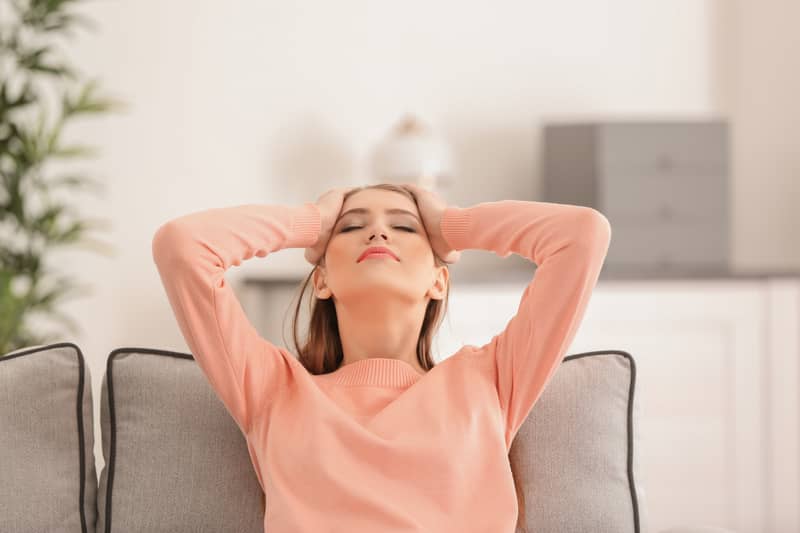Tension headaches happen to everyone, but they can often feel like unwelcome visitors. From dull, aching pain to pressure across the forehead, it can feel like a lifetime before they subside. For the most part, they are usually just a small nuisance and don’t occur often. However, you may have stumbled upon this article because they have started to disrupt your life, and other forms of therapy haven’t worked for you. Acupuncture and acupressure are well-known alternative holistic treatments for tension headaches that are worth a try if you haven’t looked into them already. In this article, you’ll learn more about how acupuncture can help with your chronic tension-type headache and pressure points for tension headaches you can use in treatment.
What Is A Tension Headache?

Most likely, you’ve experienced tension headaches before. They’re a common type of headache that people often describe as a tight band around the forehead. You’ll feel dull pain, pressure, and sensitivity around the head. Even though it’s prevalent, it is not yet understood why it happens. Some of the most common causes include staring at screens for hours, driving for long periods of time, stress, dehydration, lack of sleep, sinus infections, colds, flu, and many more. Typically, they can be made more tolerable by drinking water, taking over-the-counter pain medications, and changing one’s lifestyle.
Will Acupuncture Help Tension Headaches?
People also commonly seek out acupuncture treatment for chronic tension headaches. Acupuncture is a part of traditional Chinese medicine (TCM) that seeks to heal issues throughout the body by inserting thin needles at acupuncture points (also known as “acupoints”). This treatment aims to remove energetic imbalances caused by stress or poor lifestyle habits. Stimulating acupoints around the body helps restore the natural flow of “qi” (energy) and, ultimately, a healing response. It is believed that the needles are actually stimulating nerves to release hormones that trigger your body to respond in such a way. And because all of our bodily systems are interconnected to each other, even acupoints far away from the head could help relieve tension headaches.
Can Acupuncture Cure Tension Headaches?
Current medical research and opinion are mixed on acupuncture treatment for tension headaches. However, the results so far seem promising. Several studies over the years have found that acupuncture is effective for frequent episodic and chronic tension-type headaches. A more recent study from 2021 showed that acupuncture combined with medical training therapy was significantly better at reducing pain than standard care. While there’s nothing conclusive just yet, there is still some evidence that it works to a degree, but it is not a cure for tension headaches. Many patients tend to use acupuncture as a complementary treatment to regular care with good results. Because it is a low-risk treatment in the right hands, you can try it out to see how you’d like it for your chronic tension-type headache. Remember that acupuncture is meant to be a long-term form of care. Even though it might provide some relief for the short-term, don’t expect it to last long from just one session. Ideally, you would see an overall reduction in pain over time from several sessions.
How To Relieve Tension Headaches With Pressure Points

Given that acupuncture involves the use of needles, professional acupuncturists are needed to perform it. Otherwise, you could risk getting serious side effects. While acupuncture is an excellent treatment, it’s not ideal for everyone. Another way you can treat yourself with a similar holistic treatment is through the use of acupressure. It works the same way as acupuncture, but without all of the scary needles. Acupressure is also part of TCM and works under the idea of qi flowing throughout the body and works to remove blockages. But if it doesn’t involve the use of needles, then what is it? In short, it’s like a targeted massage. The needles are replaced by firm pressure at the various acupoints. There’s less research to back up acupressure, but you have nothing to lose if you try it out. It’s free, safe for most people, and simple to do.
To perform acupressure for tension headaches on yourself, follow the steps below to get the most out of the treatment.
- Study the pressure points for tension headaches below. Get familiar with their locations and determine whether you’re able to work on them yourself or not. If there is an injury, bruise, open wound, swelling, or relatively sensitive area at any of the acupoints, do not attempt to perform acupressure on it as you can risk further injury.
- Massage and apply firm pressure to each acupoint. With your hand, press down on one acupoint at a time and move your thumb in a circular motion. You can keep firm pressure, but don’t press down too hard to the point that it hurts.
- Repeat with each acupoint.
What Are The Pressure Points To Relieve A Tension Headache?
While there are many pressure points out there that could help alleviate tension headaches, GB-20, GV-20, EM-5, LI-4, and Liv-3 were recommended to be the main acupoints for this condition. Below we’ve detailed each acupoint, their locations, and their role in helping chronic tension-type headache relief.
Acupoint: GB-20 (Other Names: Gallbladder-20/Feng Chi/Wind Pool)
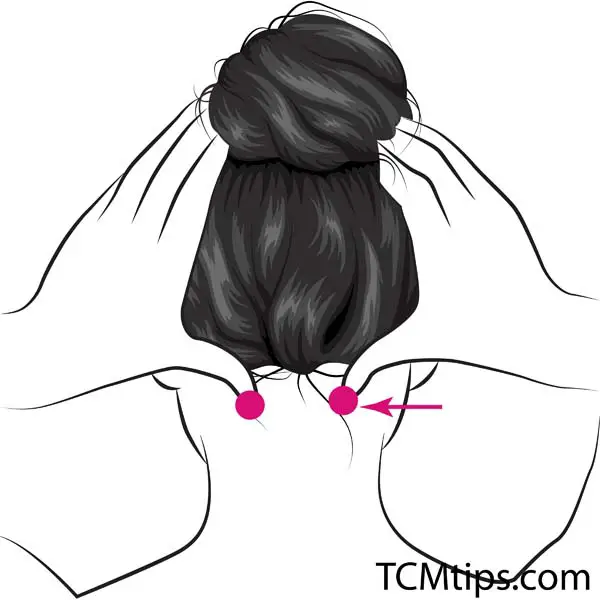
GB-20, also known as “fengchi” or “wind pool”, is located on the posterior neck at the base of the head. This is an ideal acupoint to use for treating headaches as it helps to clear the head and relieve pain. It is also one of the best acupressure points for eyes.
Acupoint: GV-20 (Other Names: The Governing Vessel-20/Bai Hui/Hundred Convergence)
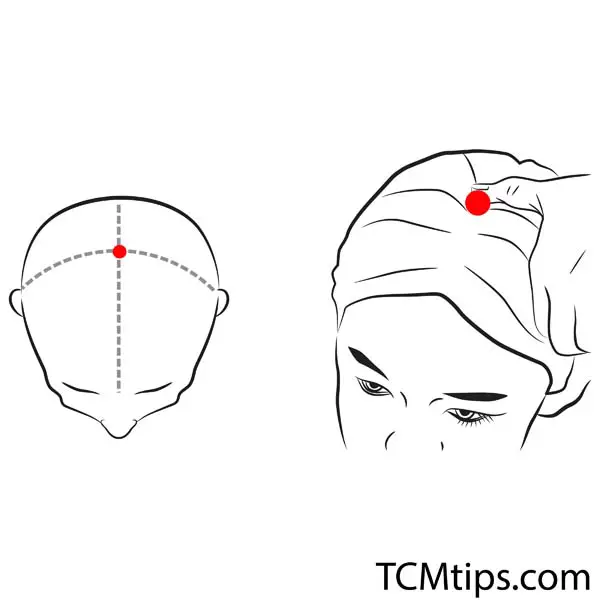
GV-20, also known as “baihui” or “one hundred meetings”, is located at the center of the top of your head. It is one of the main acupoints for headaches since it helps treat internal wind. Additionally, you’ll find that it helps with dizziness, eye pain, irritability, and hypertension.
Acupoint: EM-5 (Other Names: Tai Yang)
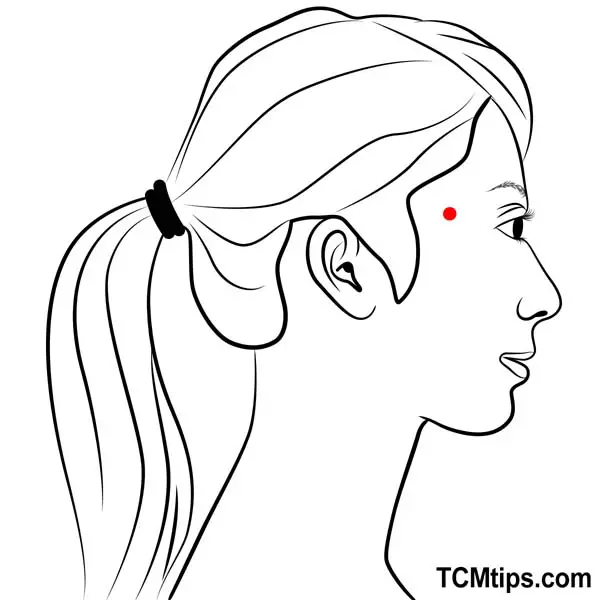
EM-5, also known as “taiyang”, is located in the depression between your eyes and scalp, also known as your temple. Like GV-20, this acupoint helps to eliminate wind, clear heat and clears the head, which significantly helps with headaches. You’ll most likely find this on the face acupressure points chart.
Acupoint: LI-4 (Other Names: Large Intestine-4/He Gu/Joining Valley)
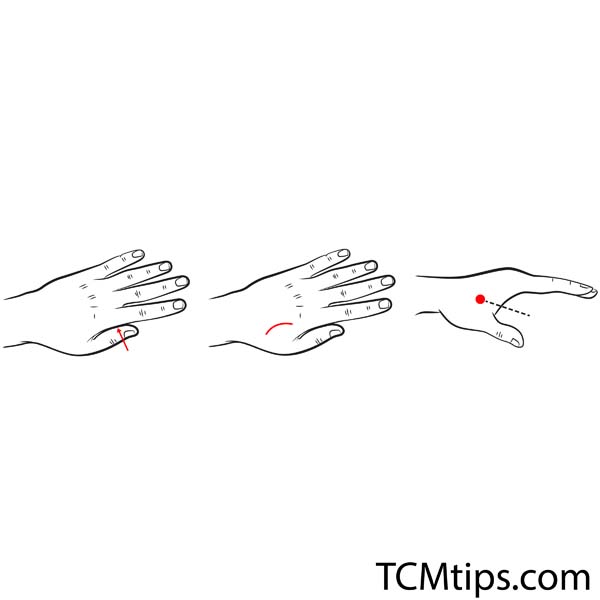
LI-4, also known as “he gu” or “junction valley”, is located in the depression between the index finger and thumb. This acupoint is like a general painkiller for your body. It helps to relieve pain anywhere and even works to detoxify. You can also use this as one of the eustachian tube pressure points.
Acupoint: Liv-3 (Other Names: Liver-3/Tai Chong/Supreme Rush)
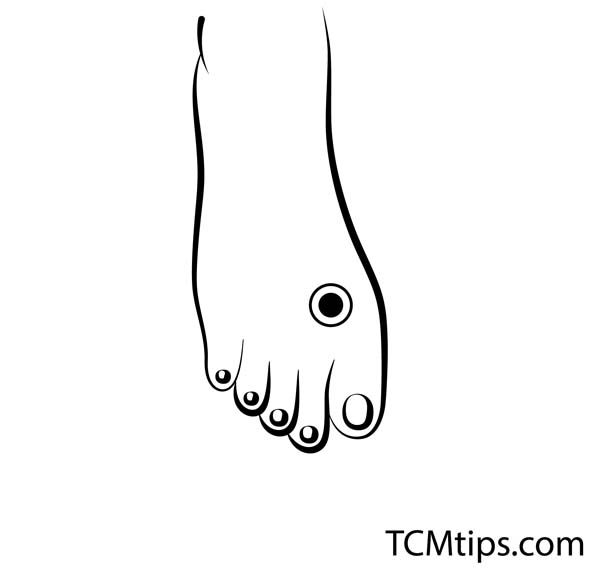
Liv-3, also known as “taichong” or “supreme rush”, is located on the dorsum of the foot, about 1 cun behind the junction between the big and second toes. This acupoint is associated with wind, so it can address issues like headaches, dizziness, and facial paralysis. It is also an excellent target for reflexology for hip pain.


Try our Anti-Aging Gua Sha Tool designed to bring out your skin’s natural glow.
Best Gua Sha Product- Anti-Aging: The tool is designed to target 11 specific aging signs such as wrinkles and sagging skin. By following the 7-step routine, users can improve skin firmness and reduce fine lines naturally.
- Enhances Skincare Routine: It works effectively with serums and lotions, boosting absorption and efficacy of skincare products.
- Visible Skin Improvement: Users can expect a smoother complexion, reduced puffiness, and a more youthful appearance.
 P. Sze
P. Sze 